Life: History & Current Definition
Life in a dictionary is defined as:
"the period between birth and death, or the experience or state of being alive"
or as
"the quality that makes people, animals, and plants different from objects, substances, and things that are dead".
But that leaves the question: scientifically, how can we determine if something is life or not?
There were some early theories, and in the past, Phylosophies that tried to give an explanation to this question. But we are going to focus in the sciences behind the explanation.
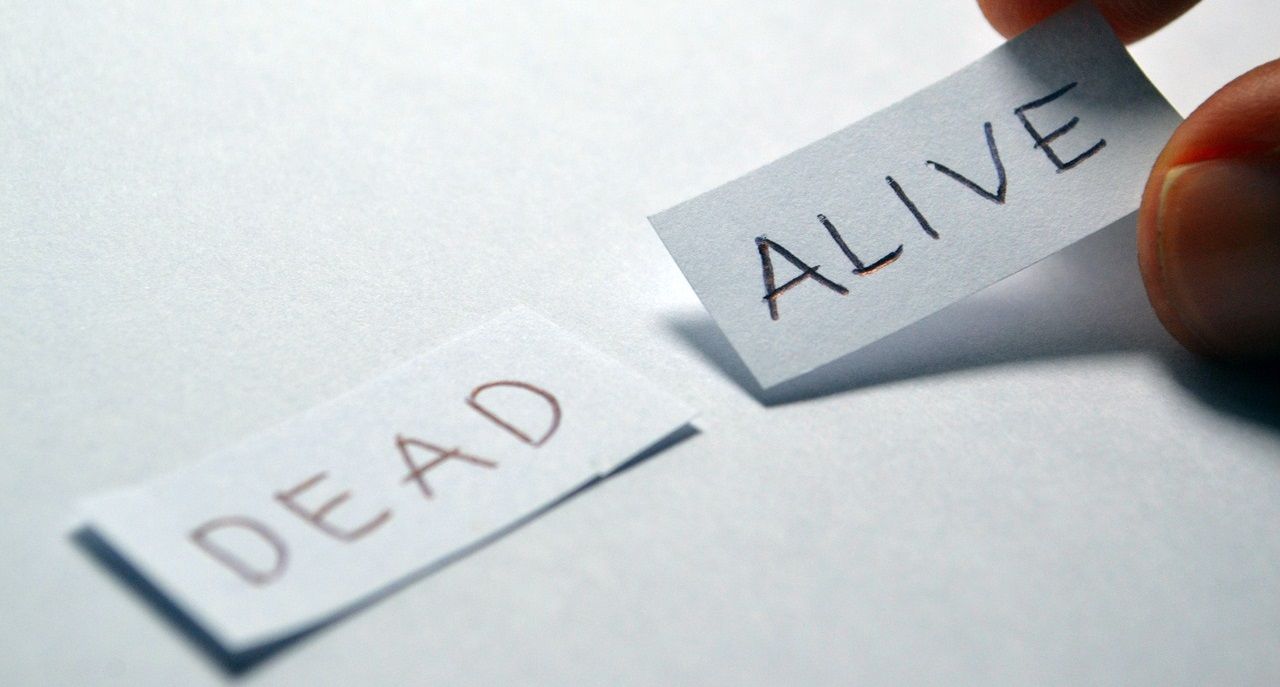
Materialism & Democritus [cca. 450 BC]
Democritus - Source
It is a Philosophy which has the view that the world is all material. This means that there is only nature (a naturalistic view of the world). Matter and its components is all that exists, without any supernatural being or any supernatural entity such as a soul that dictates if something is living. This joins what is life and what is inorganic matter under the same umbrella.
This thought was holded in Ancient Greece. But some Philosophers were not convinced with it. Democritus for instance, also thought that what "living things" have a charasteristic feature called psychê. According to him, this is the characteristic of living things to perform their life functions and activities, but in no way correlated to what we understand today as a soul.
Spontaneus Generation [cca 17th century]
This early theory was posterior and suggests that all living organisms descent from non-living matter in an spontenous manner.
But this theory was debunked by the famous Louis Pasteur, who made his famous experiment in which he discovered the way for sterilization.
In his experiment, he added water and nutrients to two glass containers with a blocked access for air and other substances to get in (a Swan neck). Then he boiled the water to kill every living organism in the containers, then on one, he removed the Swan neck.

Pasteur's experiment visualized - Source
His conclusion?
When he removed the Swan neck, he observed that not too long after, life was making his way into that container. But the other (blocked container) was still intact. Thus, life comes from the air and environment around, not by Spontaneous generation.
Cell Theory [Contemporary]
Hooke's Vegetable tissue under his microscope - Source
Around the year 1665, Robert Hooke started working on vegetable tissues, and thanks to his technical abilities, he developed a basic instrument for controlling the focus point of an object, with a light source and its variation and the angle of view.
What we call today a microscope.
He then observed the vegetable tissue depicted above, and he discovered the empty spaces in walls, something that he called cells, in the amount of millions! Thus, the term stuck around for posterity.
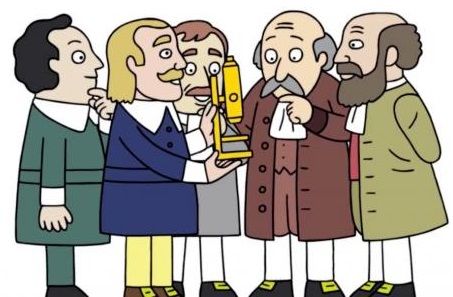
Scientists of the Cell Theory around a microscope in comic - Source
In the 19th century, Scheliden Schwann & Wirchow established the postulates of what it is the Cell Theory, based on previous discoveries and Hooke's invention of the microscope:
- The basic mophological and functional unit of life is a cell.
- All organisms are formed by cells, which is the smallest and non-divisible unit.
- Cells only arise from pre-existing cells. (And not by Spontaneous generation as Pasteur proved).
As of today, this postulates are still in place, but with extra information due to the biochemical and biological discoveries made in the modern world.
- All cells have a similar chemical composition.
- Energy flows inside cells due to metabolism.
- The cell is the autonomic genetic unit of any organism, passing the heridity information from cell to cell.
- A cell is an open system containing membrane compartments and membranes.
NASA's definition [Contemporary]
"Life is a self-sustaining system capable of Darwinian evolution"
This definition is made for space exploration and/or could be expressed along the "definition" given by the postulates of the Cell Theory.
We cannot be specific with this definition because, what if we find "life" in the universe that is not made of cells? Or what if it is made out of cells but doesn't use DNA to reproduce?
Thus, the meaning had to be "changed" to be more general for other living systems that could not be considered life by current definitions.
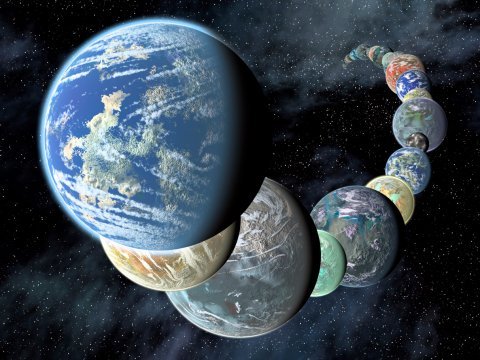
According to NASA, a self-sustaining system ("organism") can be anything that tends to homeostasis, which is the stable state of the internal environment of an organism. Furthermore, that self-sustaining system has to meet the criteria of (somewhat) be able to respond to stimulation from the environment surrouding it.
On the other hand, Darwinian evolution refers to the ability of a system to develop and adapt to its environment by changing and giving those changes to their offspring. Thus, increasing that self-sustaining system survival as population. Something called natural selection. In life systems on Earth, those changes are presented by mutations in the genetic code of the organisms. But in outher places in the universe, could be anything else.
This means (in a nutshell) that life, to exist, has to be able to adapt to changes in the environment, reproduce to give those adaptations to their offspring and thus evolving in that direction, been part of the natural selection process.
Definition: The Challenges
A) Viruses
Viruses - Source
A virus is a microscopic organism that needs from an existing cell to reproduce. They are genetic material (DNA or RNA) that could be replicated with mutations (changes) and thus change to be adapted for new environmental conditions, which in this case could be avoiding the host cell's defense mechanism against it.
Even with the definitions above, the questions still persist: Are the alive? Or are they inert?
Could fit under NASA's definition, but not under the Cell Theory.
B) Digital organisms?
Basic scheme of the inner workings of Avida software and its output to the digital dish - Source
As technology advances, we can create from binary code in computers, more and more complex simulations of organisms, environments and conditions.
In fact, there are two big projects that aim to achieve this: the Avida digital organisms & the E-cell!
They (as of the time of writing) are capable of creating a whole genome, control their offspring, react in an organic manner to their environmental conditions, interact to each other for reproduction or as a population...
One day they will be a recreation 1:1 to their real counterparts and by that point, it begs the question: are they "life"? Or just because they are programs they are not "life"?
They could fit in both definitions of the Cell Theory & NASA's definition!
Conclusion
I tried to cut as much as possible the Philosophical part of the definition of Life and focus more on the science of it. But this topic was actually difficult because it involves both Science and Philosophy really tightly.
Furthermore, it is not only what can be proved empirically to be "life", but also what we think ourselves is life. There is an ongoing debate from experts on what they consider life. Some of them suggest that viruses could fall into that concept. Others think that strictly is anything that can be reduced to a cell, counting even electronic organisms. Although other authors consider life more of an umbrella concept.
I would like to finish this post with this open question for you, the Steemian reader.
Given the facts, the theories, and our currect understanding of all organisms (viruses, digital and others), where would you draw the line of "Life" & non-living matter?
References
Definition of life - Cambridge dictionary
Materialism 1 - Wikipedia
Materialism 2 - Allaboutscience.org
Democritus' Life definition - Plato.standford.edu
Spontaneous Generation - Britannica.com
Louis Pasteur: Experiment and Debunk - pasteurbrewing.com
Robert Hooke's Microscopy - science-of-aging.com
Cell Theory & Characteristics - thoughtco.com
Cell as an open system - sites.google.com cell as an open system
NASA's definition of Life - nasa.gov
Defining Life by Joyce and Rummel - space.com
Darwin's Theory of Evolution - darwins-theory-of-evolution.com
Medical definition of Virus - medicinenet.com
Avida Digital organism - mitpressjournals.org
The E-cell project - e-cell.org
Closing
Thanks for all the community of #Steemstem for all the support on my last post about Physiology of Acid-Base Balance! I would try to do a follow up of this post that will be about the Origin of Life and some theories.
This is @deholt signing off!
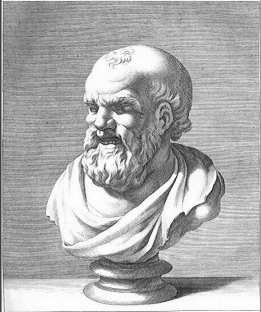
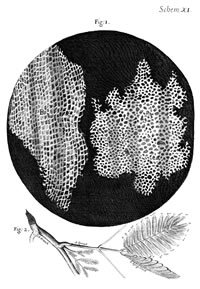
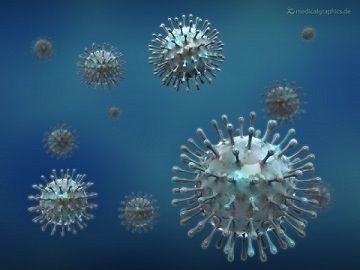
Sneaky Ninja Attack! You have been defended with a 5.97% vote... I was summoned by @deholt! I have done their bidding and now I will vanish...Whoosh